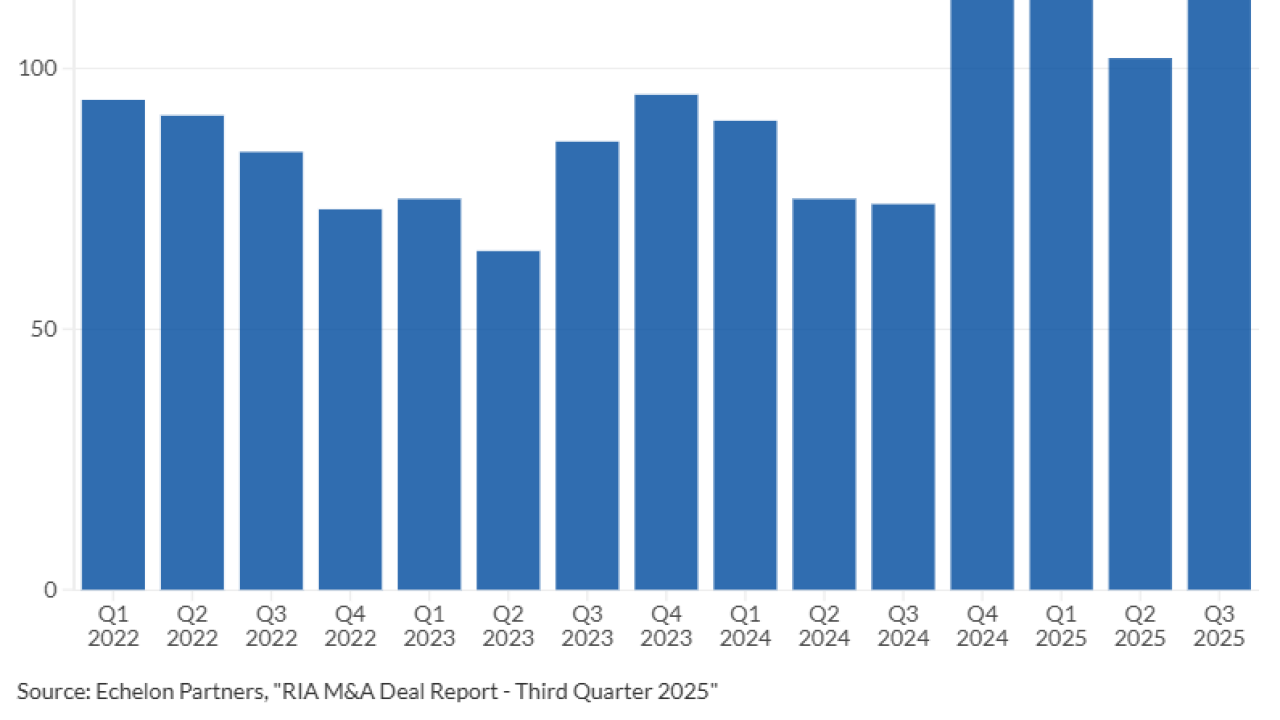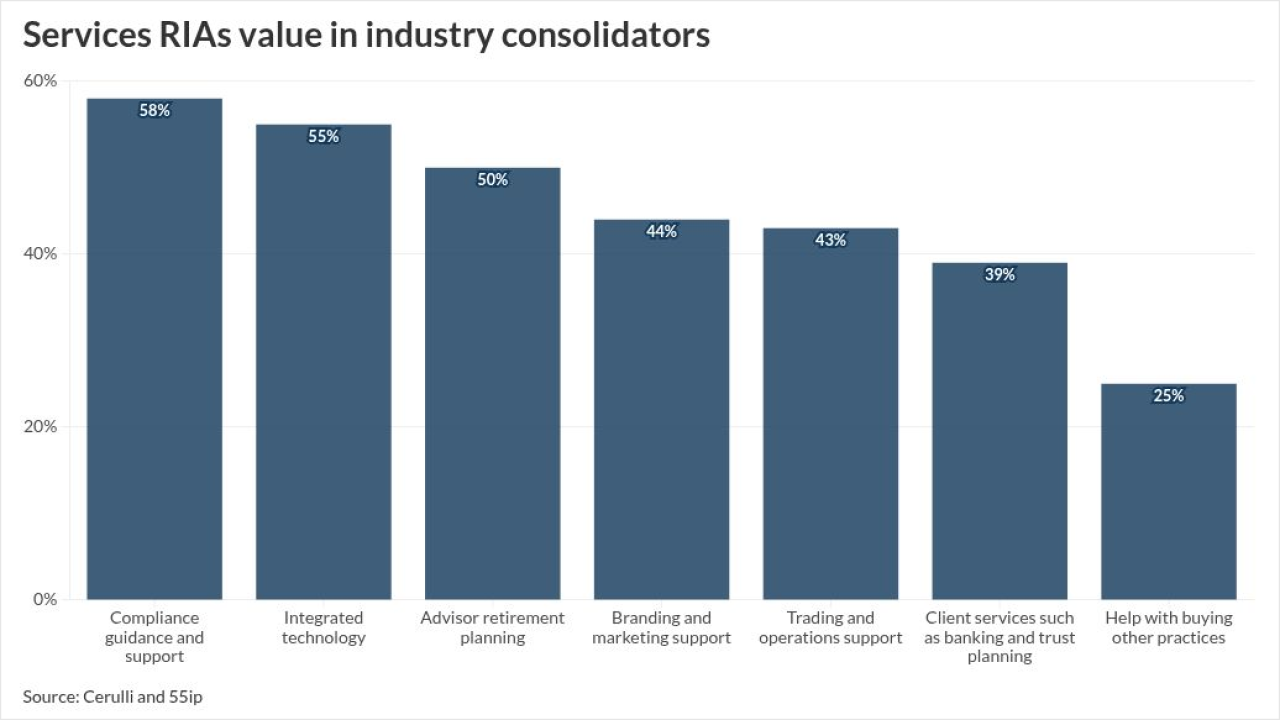The tricky alternative minimum tax is coming back into play for many clients and their financial advisors under the One Big Beautiful Bill Act.
But understanding the AMT's history can help explain its complicated rates, phaseouts and exemptions — and their impact on clients. The origin story of the AMT rings familiar in some ways. In others, it sounds like the events took place in an alternative universe.
Days before President Richard Nixon took office in January 1969, Treasury Secretary Joseph Barr of the outgoing Johnson administration warned the Joint Economic Committee of Congress that there could be "a taxpayer revolt over the income taxes in this country" from middle-class households. They "pay every nickel of taxes at the going rate" because they "do not have the loopholes and the gimmicks to resort to,"
"You look around and you see many people with huge advantages," he said. "Now, these are difficult to terminate. These special tax provisions are controversial subjects, Mr. Chairman, but I submit that if we are going to maintain this magnificent tax system with its advantages for revenues and provide the revenues that Sen. [Jacob] Javits [of New York] mentions that he wants to use in the cities and the rest of you want to use for various purposes, it must be a fair system."
In 1969, Congress received more constituent mail

The Tax Cuts and Jobs Act of 2017, however, drastically cut AMT liability. The
READ MORE:
Hello, old frenemy: Who the new AMT structure will affect
Planners who acquaint or reacquaint themselves with the nature and rules of the AMT can prepare clients for the ramp-up under OBBBA. Starting next year, more of them will have a so-called tentative minimum tax payment from the AMT that may turn into an actual payment, if it's larger than the client's basic income liability.
In particular, clients who are receiving the higher

The "millions of taxpayers who were subject to it who stopped being subject to it" will probably "already have some familiarity," with the AMT, Swan said. Compared to the roughly 200,000 households that were covered by the AMT under the 2017 law, the new rules are "not going to capture nearly as many people" as the 7 million that would have fallen under its purview in a lapse of the rules, she noted. But Swan predicted that several millions more will pay or at least estimate their AMT under OBBBA's rules in 2026.
"The people who are going to need a lot of education are the people who are newer to wealth, newer to employment," she said, noting how many tech startups compensate their teams with stock options. "There are so many younger employees. That is a group of individuals who are going to need a lot of education around this, because they probably haven't dealt with this before. … Unfortunately, I am guessing a lot of those early-stage employees are doing self-service investing. So they hopefully are looking for this education on their own."
READ MORE:
Calculating, or trying to calculate, the new AMT
Both
This year, the exemptions are $88,100 for individuals and $137,000 for couples — but AMT exemption amounts

Once tax planners and their clients know their exemption, they can come up with their taxable AMT income by using a 26% rate for the first $239,100 of that income for joint filers (or $119,550 for individuals) and a 28% rate for the rest. When they have that number, they will reduce the amount of any AMT foreign tax credit they have claimed from their taxable AMT income. And then they can compare the AMT liability — their tentative minimum tax — to that of their basic income. The household will pay the higher of those two numbers.
"A lot of people like to, I think, ignore the AMT a little bit," Henry-Moreland said. It's no wonder — with TCJA, just 0.1% of households ended up with AMT liability, versus about 5% prior to the 2017 law, he noted. The new law won't push the share to that level, but a small yet meaningful subset of clients may require planners to bring the AMT to their attention for a valuable conversation on whether to accelerate some forms of income in 2025 over 2026.
"It's a complicated thing. People don't like to talk about it. People don't like to plan around it," Henry-Moreland said. "It will be more than it has been for the last eight years, but probably not as many as before then. It will become a little more relevant, but it will not be a huge planning issue for masses of taxpayers."
The number of households paying AMT fell to between roughly 150,000 and 250,000 per year between 2018 and 2022 under TCJA, but an average of 5.98 million households filed
That disparity between the number of taxpayers estimating their possible liability and those who end up paying represents another frustrating aspect of the AMT — and it will be more pronounced under OBBBA, noted Garrett Watson, a
"You have to basically calculate taxes twice," Watson said. "That just adds time in the calculations. There are separate sets of rules."
READ MORE:
The history of a political football, and other legislative metaphors
The alternative tax system morphed over time from the relatively simple "add-on" tax, which Congress repealed in 1982, to the AMT, which began in 1978 and has seen many alterations since then. Its earlier lack of inflation indexing for the AMT exemption kept adding to the number of households that had liability. That led Congress to enact a series of "patches" that temporarily shielded some wealthy households but left the underlying policy intact.
By 2010, it was "threatening 23 million taxpayers, including firefighters, teachers and others who were never intended to fall under its grasp," to the point that households with less than $100,000 in income comprised 52% of those covered by the AMT's rules, according to
"What we have, in essence, is one law that grants popular tax benefits (the regular tax code), another law that eliminates the benefits (the AMT), and then yet a third law that undoes the elimination of benefits (the patches), usually at the last minute — a legislative Rube Goldberg contraption of unnecessary complexity," according to
The 2012 tax law raised the AMT exemption and adjusted it for inflation, but the number of taxpayers subject to it kept climbing —
READ MORE:
Looking ahead to the 2026 tax year
The AMT picture won't look that stark next year, thanks to the new law. Nevertheless, the new rules will place some clients in what Henry-Moreland calls the "bump zone" of potentially higher marginal tax rates for certain households with incomes between $500,000 and $676,200 for individuals and from $1 million to $1,274,000 for couples. Because of the phaseout formulas for the exemptions, each dollar above $500,000 for single filers and $1 million for couples effectively counts as $1.50 of AMT income, he pointed out. So some households that fall into the bump zone might pay Uncle Sam at a 42% effective rate, which is five percentage points higher than the
Since it's "almost impossible" to do some sort of a back-of-the envelope calculation without tax software calculating the "many moving parts and areas that impact other areas," advisors who don't prepare returns should encourage clients to get an AMT projection from a tax professional and to consider whether rules like the expanded SALT deduction could affect their taxes, Henry-Moreland said. "For those advisors, it's more helpful to know what situations you might see with clients where they might be triggering AMT where they weren't necessarily before."
Income from the yield on private activity bonds, which are public-private versions of municipal bonds that finance certain kinds of infrastructure, constitutes another such situation, Swan noted.
"Particularly for retirees who might be heavily invested in private activity bonds as their retirement income stream, suddenly being subject in retirement to the AMT could be catastrophic," she said. "That could get really ugly."
In general, the "big gap" between the taxpayers who must calculate potential AMT liability and the smaller number who ultimately pay it presents the opportunity for future reforms, said Watson. For now, an as yet unknown number of additional households will pay the AMT in 2026 under OBBBA.
"If you only have to calculate it if you actually owe something, that may be helpful, in terms of the underlying complexity," Watson said. "I would expect a bump upwards in the years ahead, just because they did reset that phaseout amount and they changed the phaseout rate."





